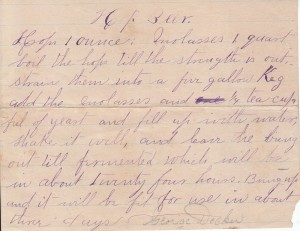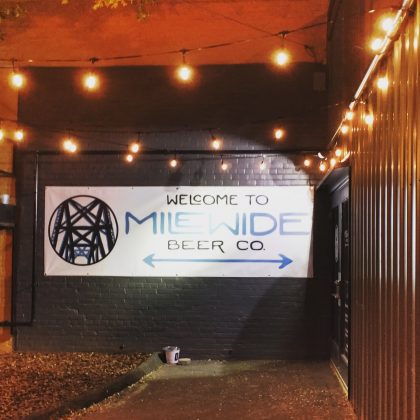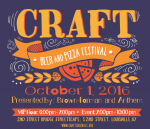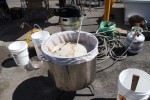 There are a lot of ways to brew a beer. Some home brewers prefer the ease of pouring a can of extract into a stockpot while others enjoy the multi step process of an all grain brew. There’s not necessarily any right or wrong to brewing as long as you get the product you want. Whether you’re brewing on your stovetop or on a stainless steel, automated brewing machine you’re bringing a recipe to life. That recipe can be a classic style, a clone of a commercially brewed beer, some recipe you found in grandpa’s notebooks or just something you came across online. There are endless possibilities for recipes, which is why in the last few years I have found that the hardest question I ever have to ask in my shop is, “so, what do you want to make?” There is no right or wrong answer, but I warn you, if you simply ask for something “good”. I’ll give you something I think is “good” and it will be high alcohol, have a lot of hops and may or may not get dipped in bourbon. For some, this might be heaven, but others will learn that “Good“ is in the eye of the beer-holder.
There are a lot of ways to brew a beer. Some home brewers prefer the ease of pouring a can of extract into a stockpot while others enjoy the multi step process of an all grain brew. There’s not necessarily any right or wrong to brewing as long as you get the product you want. Whether you’re brewing on your stovetop or on a stainless steel, automated brewing machine you’re bringing a recipe to life. That recipe can be a classic style, a clone of a commercially brewed beer, some recipe you found in grandpa’s notebooks or just something you came across online. There are endless possibilities for recipes, which is why in the last few years I have found that the hardest question I ever have to ask in my shop is, “so, what do you want to make?” There is no right or wrong answer, but I warn you, if you simply ask for something “good”. I’ll give you something I think is “good” and it will be high alcohol, have a lot of hops and may or may not get dipped in bourbon. For some, this might be heaven, but others will learn that “Good“ is in the eye of the beer-holder.
When thinking about what recipe to brew the best and easiest place to start is by deciding ale or lager. Ales are far more common for home brewers because the yeast will react best around room temperature. Lagers are a far more temperamental strain that require consistent, cooler temps for longer periods of time. Ales give you plenty of options with Pale Ales, IPA, Kölsch, Scottish and Irish beers, Porters, Stouts, Hefeweizens and Belgian styles. The American Homebrew Association recognizes 23 classes with 81 sub-classes and that includes categories like Fruit Beer, Spiced and Vegetable Beer and Specialty, which can have incalculable variations. You can then decide the alcohol content: Sessionable (around 5%) or one sip and you’re done. You can start with a single ingredient to feature like honey, peat or cherrywood smoked malt or a Belgian candi syrup. You can start with an arbitrary additive: hibiscus, maple syrup or some of those blackberries growing behind the house. Don’t limit yourself to what is commercially available or traditional. This is the homebrew kitchen and you are the head chef.
When it comes down to specific ingredients, how much do use? When do you add it? How do you get it to taste right? Experimentation is going to be key, but you can always start by checking the online homebrew forums and read various recipes to see what others have tried. Just read a lot, it’s the internet, there are a lot of opinions floating around. Check out the local craft beer bars and taste different styles. When frequenting these places look around and there’s pretty much always bound to be a home brewer drinking nearby (hint: he or she will always smell their beer before consuming). I highly recommend checking out one of our regional homebrew clubs L.A.G.E.R.S in Louisville and F.O.S.S.I.L.S in Southern Indiana or BOCK in Lexington. Each club has GROUPS on Facebook. Each club is a mix of great folks from all brewing levels who just want to brew and drink some good beer. And talk about it. Christ, do they want to talk about it.
The advanced brewer may start with just a single hop variety in mind, which can be a great way to learn about what makes those hoppy beers, like India Pale Ales, tick. There are a lot of varieties out there and they all have their own characteristics. There are probably already a couple varieties you favor and don’t even realize it. Take a commercially available beer you already like and do a little research. The hop varieties are sometimes listed right there on the bottle or on the menu of the bar where you ordered it. You can check the breweries website and see if they list them (they usually do). Then develop a recipe around using that hop.
A real unique way to start a recipe is with an unfamiliar or seasonal yeast strain. For this one you’ll probably have to come to the shop and see what’s in stock. You can always try the new strain in a recipe of the same style, but this can be your chance to be a genuine mad scientist. For example, you can take a specialty Abbey yeast strain and use in a Double IPA recipe or take Hefeweizen yeast and do your own take on an Irish Red Ale. I can’t promise you’ll compose Mozart on your first try, but you will make beer and that’s always music to my taste buds.
You don’t have to have any particular recipe in mind when you come to my shop. Explore, taste, smell, ask questions and most importantly make the beer that you’re craving. The next time you’re having a pint of inspiration at one of our area’s various watering holes, consider this question, “If I was the brewer, how would I brew it?”
Check out these Clubs and My Old Kentucky Homebrew on FACEBOOK





